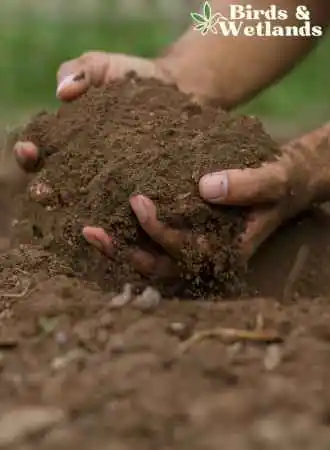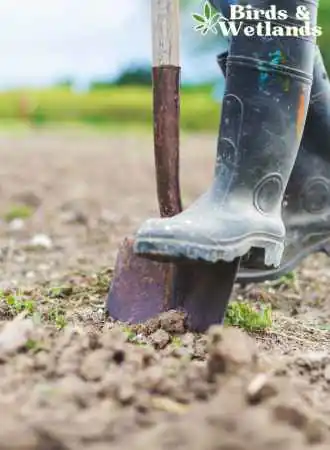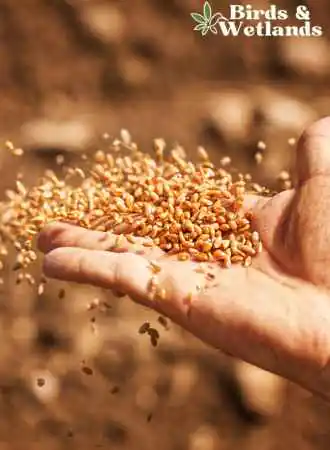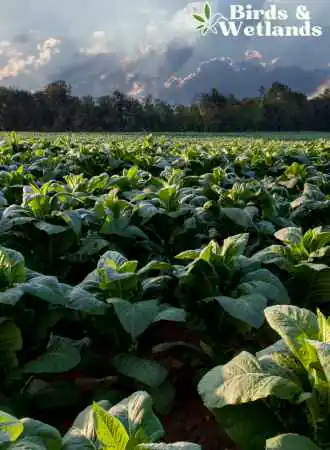Duck season is one of the most exciting times of the year for avid hunters. One way to increase the chances of successful hunting is by planting a duck food plots. These plots are specifically designed to attract ducks and provide them with the necessary nutrients to thrive.
A duck food plot is a cultivated area that provides a habitat and food source for ducks, encouraging them to frequent the area. To create a successful food plot, plant a mix of wetland plants and grains, such as wild rice, millet, smartweed, and sorghum. These plants not only attract ducks but also offer nourishment, ensuring a thriving ecosystem for your feathered visitors.
Duck hunters who take the time to plant a food plot can significantly increase their chances of success during the hunting season. By providing ducks with a healthy and attractive food source, hunters can attract more ducks to their hunting area.
With the right seed mix, planting depth, and timing, a duck food plot can become a valuable asset for any hunter looking to improve their hunting experience.
Key Takeaways:
Food plots provide habitat and food sources for ducks
Plant a mix of wetland plants and grains, like wild rice, millet, smartweed, and sorghum
Nourishing plants attract ducks and support a thriving ecosystem
Preparing the Soil
Preparing the soil is a crucial step in creating a successful duck food plot. A well-prepared seedbed will provide the ideal conditions for germination and growth, ensuring that your food plot will attract waterfowl and other wildlife.
Soil Preparation
Before planting, it is essential to prepare the soil properly. This involves removing any debris, rocks, or weeds that may hinder the growth of your food plot. The soil should also be tested to determine its pH level and nutrient content. A soil test will help you choose the right fertilizer and seed for your food plot, it will tell you if corn or millet etc are better and how much crops you can plant per acre.

Planting Depth
Planting depth is another critical factor to consider when preparing your soil. Most duck food plot seed should be planted at a depth of 1/4 inch to 1/2 inch. However, some seeds, like buckwheat and rice, should be planted at a depth of 1 inch to 2 inches.

Fertilizing the Soil
Fertilizing the soil is essential for the growth of your food plot. Before planting, it is recommended to fertilize the soil with a balanced fertilizer that contains nitrogen, phosphorus, and potassium. The amount of fertilizer you need will depend on the nutrient content of your soil.

Choosing the Right Seed
Choosing the right seed is critical to the success of your food plot. Some popular duck food plot seed options include Golden Millet, Japanese Millet, Egyptian Wheat, Guide’s Choice, buckwheat, rice, and soybeans. Each seed has its own unique characteristics and benefits, so it is essential to choose the seed that is best suited for your soil and climate.
Preparing the soil for your duck food plot is crucial for its success. By following these steps, you can create a well-prepared seedbed that will provide ideal conditions for germination and growth. Remember to test your soil, choose the right seed and fertilizer, and plant at the proper depth to ensure the best possible results.
Planting the Seed
When it comes to planting duck food plot seed, there are a few different methods that can be used depending on the conditions of the area. Here are some sub-sections to help guide the planting process.
Broadcasting the Seed
One common method of planting duck food plot seed is broadcasting. This involves spreading the seed over the ground without any specific pattern or row. It can be done by hand or with a mechanical spreader. Broadcasting is a good option for larger areas where precision is not as important.

Spreading the Seed
Another method is spreading the seed, which involves spreading the seed in rows or specific patterns. This method is useful for smaller areas where precision is important.
Planting in Flooded Areas
If planting in a flooded area, it is important to wait until the water has receded before planting. Once the area has dried out, the seed can be broadcast or spread over the ground.

Planting in Dry Areas
If planting in a dry area, it is important to make sure the ground is moist before planting. This can be done by irrigating the area or waiting for rainfall. Once the ground is moist, the seed can be broadcast or spread over the ground.
Planting in Summer
Planting duck food plot seed in the summer can be challenging due to the heat and dry conditions. It is important to make sure the ground is moist before planting and to provide irrigation if necessary.

Planting in Spring
Spring is a good time to plant duck food plot seed as the ground is typically moist from spring rains. It is important to plant the seed early in the spring before the ground becomes too dry.
Establishing a Stand
Once the seed has been planted, it is important to establish a stand. This involves ensuring that the seed has germinated and that the plants are growing properly. It may be necessary to fertilize the plants or provide irrigation to help them grow.
Planting duck food plot seed requires careful consideration of the conditions of the area. Whether broadcasting or spreading the seed, planting in flooded or dry areas, or planting in summer or spring, it is important to make sure the seed is planted properly and that a stand is established.
Caring for the Plants
When it comes to duck food plot seed, caring for the plants is important to ensure a successful harvest. Here are some tips on how to care for the plants:
Spraying the Plants
Spraying the plants with herbicides is an important step in caring for them. This helps to control weeds and other unwanted plants that can compete with the duck food plot seed for nutrients and sunlight. It is important to follow the manufacturer’s instructions when spraying the plants, and to avoid spraying when it is windy or when rain is expected within 24 hours.

Attracting Birds and Ducks
Attracting birds and ducks to the food plot is important for a successful harvest. Planting a variety of plants that produce seeds and provide cover can attract a variety of birds and ducks. It is also important to provide water sources nearby, such as a pond or stream, to attract waterfowl.
Mature Faster
To help the plants mature faster, it is important to plant them at the right time and in the right location. Planting in the spring or early summer can help the plants mature faster, and planting in a location that receives full sun can also help. It is also important to fertilize the plants regularly to ensure they receive the nutrients they need to grow.

Harvesting the Crop
Harvesting the crop at the right time is important to ensure the plants have produced enough seed. It is important to wait until the plants have fully matured and the seed heads have turned brown before harvesting. This usually takes about 60-90 days after planting.
Edging the Food Plot
Edging the food plot can help to keep the plants contained and prevent them from spreading into other areas. It is important to use a sturdy edging material that can withstand the elements and to make sure the edging is installed properly.
Choosing the Right Season
Choosing the right season to plant the duck food plot seed is important for a successful harvest. Planting in the spring or early summer is usually the best time, as this gives the plants enough time to mature before the duck hunting season begins in the fall. It is also important to plan ahead and make sure the food plot is planted in an area that is accessible and easy to maintain.

Caring for the duck food plot seed involves planning ahead, planting in the right location and season, spraying the plants, attracting birds and ducks, fertilizing regularly, and harvesting at the right time. By following these tips, you can ensure a successful harvest and attract a variety of waterfowl for hunting season.

